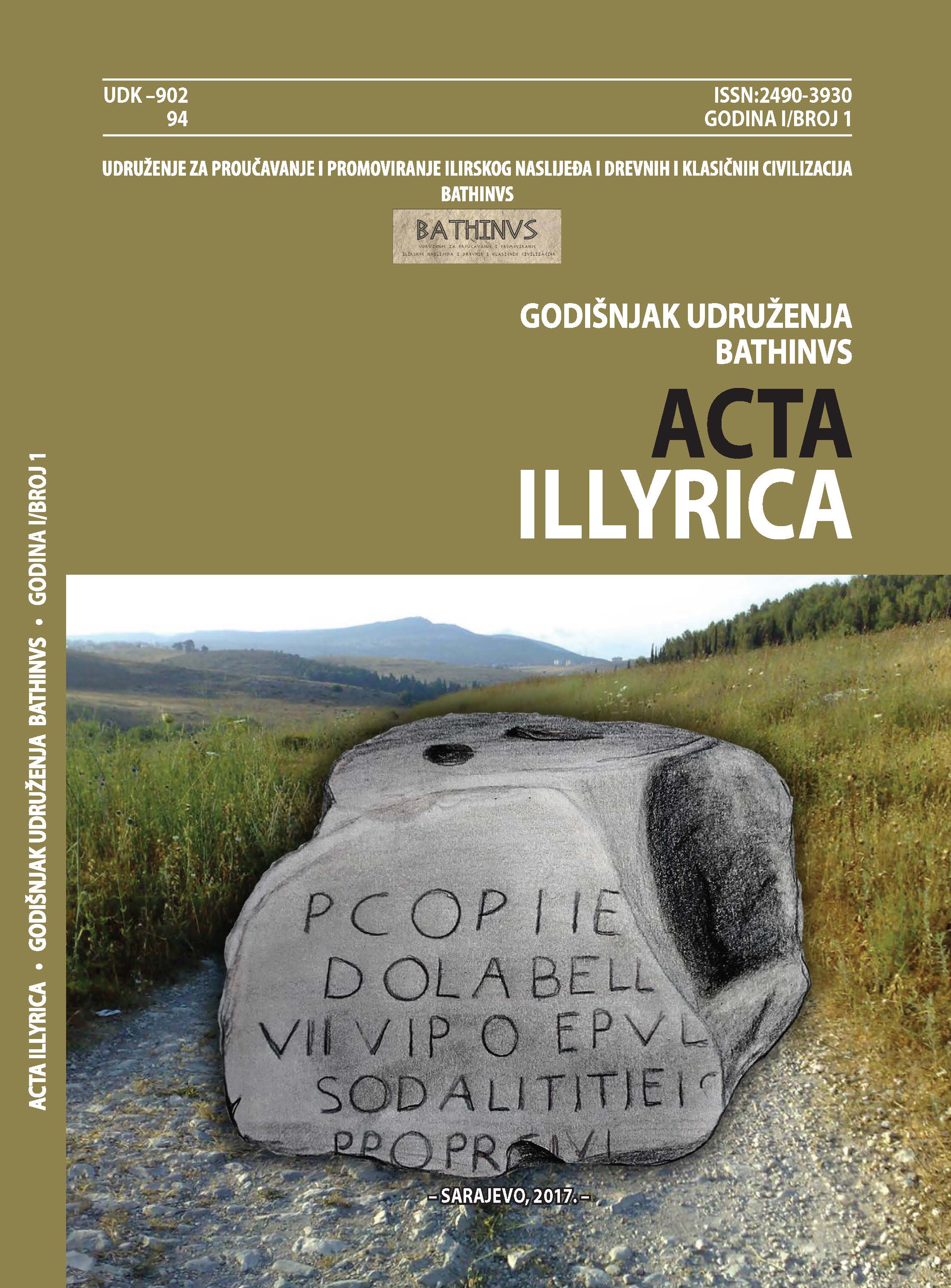Urbanizacija bosanskohercegovačkih prostora u vrijeme rimske uprave
The urbanisation of Bosnian and Herzegovinian areas under the Roman rule
Author(s): Mersiha Imamović, Bego OmerčevićSubject(s): Economic history, Ancient World
Published by: Udruženje za proučavanje i promoviranje ilirskog naslijeđa i drevnih i klasičnih civilizacija “BATHINVS”
Keywords: urbanisation;Bosnian-Herzegovinian territory;roman empire; Upper Illyricum; Dalmatia; Romans; Illyrians; Salona; Narona; Servitium; Sarajevo field; Domavia; Skelani;Argentaria;
Summary/Abstract: After the conquest of the Bosnian and Herzegovinian territory, the Romans launched numerous campaigns so this region and its population could be incorporated into the Roman life and Roman civilization of that period as quickly as possible. They believed that this is the only and the best way to make themselves the masters of this region. As part of their extensive activities, those that focused on systematic and full implementation of urbanization in the present-day Bosnia and Herzegovina were especially important. This long process encompassed the infrastructure construction, modelled on the Italic cities, villages, economic and other facilities. The first steps of the Roman authorities were to construct modern and high-quality roads, i.e. a powerful road network that would facilitate a faster and stronger connection between settlements and economic resources around present-day Bosnia and Herzegovina. Publius Cornelius Dolabella, who served as an imperial governor of the province of Upper Illyria from 14th to 20th AD, had a special role in the implementation of this plan. The construction of the first roads began upon his initiative and under his strict supervision. He intended to establish a better connection between the regions of present-day Bosnia and Herzegovina with the eastern coast of the Adriatic Sea. These first roads created good foundation for a complete urbanization of this area.Along with the road construction, the Romans launched the activities that included new settlements, firstly along the Roman roads, then at the crossroads, and then in the regions had were rich in resources. Each settlement, in its appearance, dimensions and layout of facilities and its infrastructure, had to correspond to the Roman building standards. The first settlements were built along the roads. The most famous sites of urban settlements include: Grkovci and Pelva (Livno plateau), Halapići and Salvium (Glamoč plateau), Pecka (the Sana river valley), Baloie (Šipovo), Bjelajac (Mrkonjić Grad), Castra, Laktaši, Gornji Šeher (Banja Luka), Servitium (Bosanska Gradiška), Delminium (Duvno plateau), Varvara (Rama river valley), Ad Matricem (Gornji Vakuf), Bistue Nova (Bugojno), Višnjica (Kiseljak), Ilidža (Sarajevo plateau), Domavia and Skelani (central Podrinje), Blagaj, Maslovare and Bosanski Novi (the Sana and Japra rivers valley), Golubić (Bihać), Bigeste (Čapljina), Leusinium (Bileća), Diluntum (Stolac), Ad Drinum (Drinjača) as well as many others, but less known. Urbanization had many positive effects in all aspects of work and life of local inhabitants from that period in the region of present-day Bosnia and Herzegovina. A road network was established, as well as numerous economic activities, lifestyle standard and social relations were raised to a significantly higher level, many settlements (cities and villages) and many cultural monuments were built.
Journal: Godišnjak Udruženja BATHINVS “Acta Illyrica”
- Issue Year: I/2017
- Issue No: 1
- Page Range: 56-77
- Page Count: 22
- Language: Bosnian

